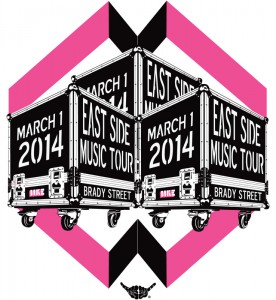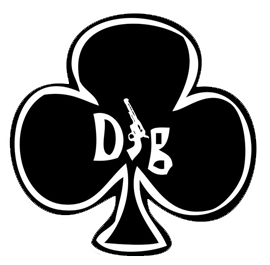Dig a bit deeper into music with some basic history, theory, and music appreciation knowledge. Discover the science that your ears and brain wire together and call music. View all

Today is Milwaukee’s long-awaited East Side Music Tour. If my Twitter and Facebook streams are any indicator, all of Milwaukee will be there. Sadly, I won’t be there for various personal excuses, but it’s honestly one of the most exciting things to happen in the local scene since it’s inaugural appearance last year. Seriously, do go if you’re not like me and stuck at work on a Saturday with several house hunting and upcoming wedding errands to take care of. I did debate hopping on the bike to catch a show or two, but alas, it’s a ticketed event. This got me thinking about the various ways that local shows are run, and why some work and some should be avoided at all costs.
Gigs
I classify a gig as single band holding down a venue for an extended period of time. Typical gig settings included a Jazz trio taking multiple sets at a small pub, a polka band playing at a beer garden, or a cover band playing at a bar from 9-midnight. Gigs typically pay musicians and treat the bands as an additional amenity. The main draw is not the music and there is no cover or ticket charge. Bands love playing gigs. Not being the focus is relaxing, and pay is wonderful. Audiences like gigs as well, as there’s no additional fee and it’s acceptable to converse with friends and come and go as you wish. In a perfect world, there would be more of these.
Shows
One to four, maybe five, bands playing at a venue in a night is a show. Sometimes there are tickets, sometimes just a cover charge, and sometimes it’s free. Audience size, musician pay, and venue type vary drastically under the realm of a show. For most bands, this is what they expect to be doing. This is where musicians get out, introduce themselves to audiences, and meet other musicians. The occasional pay is nice, and getting in front of the other bands’ audience is nice too. The audience at a show is made up of scenesters who go to as many shows as possible, dedicated fans of a single band, and the opening band’s parents. Shows tend to place a focus on the bands, with any drinks or other entertainment being secondary. Almost anyone can have a good time at the right show, but they’re often under-attended. Get out there, people!
Festivals
Multiple bands and multiple stages make a festival. We’ll count any two band, dueling stage event as a show still. Very few festivals are free, and some are outrageously expensive. To the bands, that ticket price and the number of other bands bringing people in means that you should expect a much bigger crowd than at gigs and shows. To the audience, the sheer number of bands playing should make the ticket price worth it. Festivals can be great successes, and festivals can flop. Ticket prices can deter the casual listener, but to a deeply involved listener, it’s an unbelievable bargain. An old curmudgeon like me doesn’t dig festivals too much, but they have tons of other supporters.
Battle of the Bands
A battle of the band is a festival with a gimmick. There’s usually some weird ticket system where each band buys tickets from the promoter, then sells them off, which is just… sigh. The audience votes, maybe?, or a panel selects a winner, maybe?, or some name is picked out of a hat, maybe? and the winning band gets some prize. I remember lots of these in high school, and you see them at music super stores and at out-of-touch venues, but I’ve either completely outgrown the scene in which they live or they’re dying out. Honestly, drop the gimmick and call it a festival, drop the number of bands and call it a show, or serve some beer and hot pretzels and it’s a gig.
Gigs, shows, festivals, yes. Battle of the bands, ugh. Do you disagree? Do you dig?

